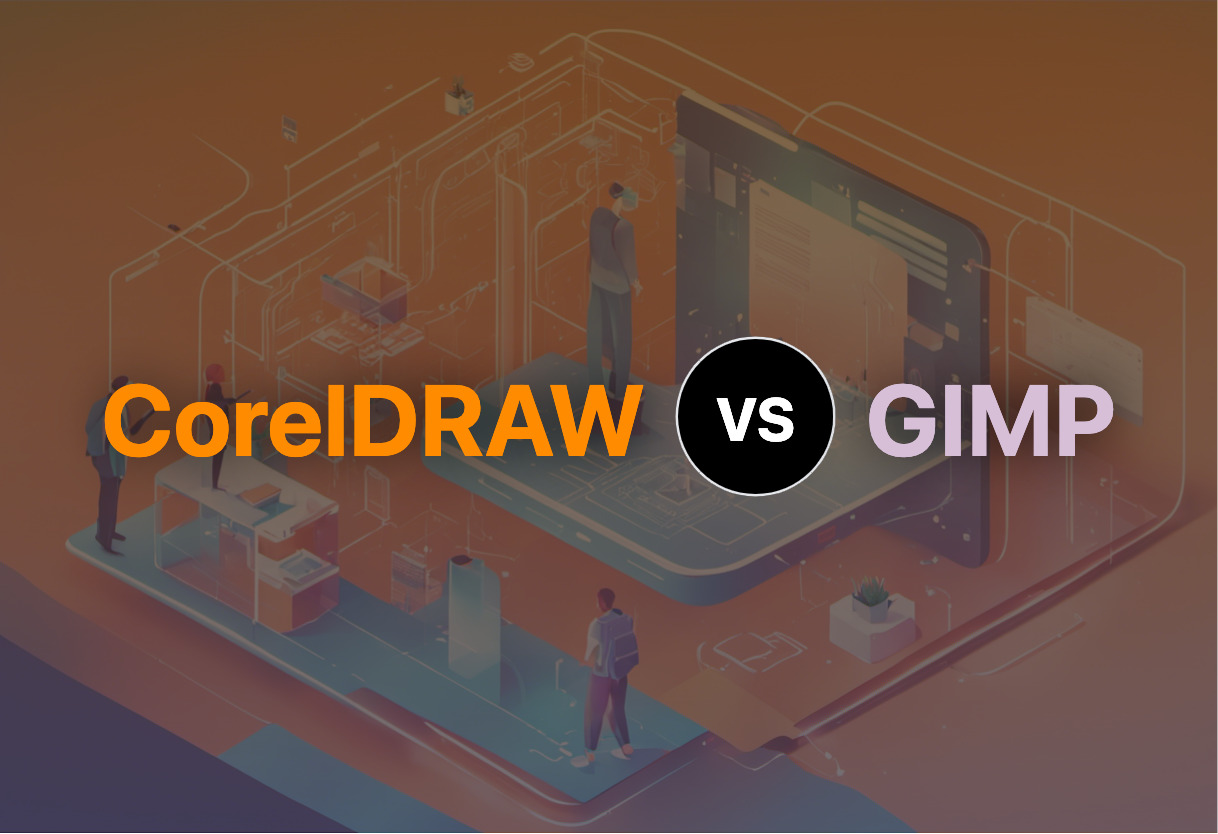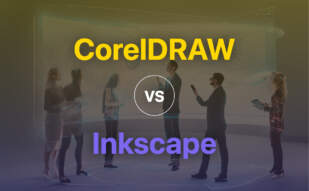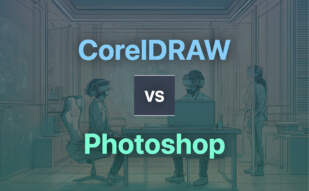For professionals seeking a comprehensive design suite, CorelDRAW is the clear choice with its advanced features and subscription-based access to new technologies and content. However, for those looking for a cost-effective, open-source alternative, GIMP shines with its free software, constant updates, and extensive range of editing tools.

Key Differences Between CorelDRAW and GIMP
- CorelDRAW is a subscription-based professional design suite while GIMP is a free, open-source image editor.
- CorelDRAW offers proprietary features such as Focus Mode and advanced Print Merge workflow, which are not available in GIMP.
- GIMP supports extensive file formats and data export, providing versatility for various projects.
- While CorelDRAW ensures color consistency across different media, GIMP offers a channel mixer for eliminating lens tilt effects and distortions.
- GIMP interface is considered cluttered and complex for beginners compared to the user-friendly CorelDRAW.
- CorelDRAW.app enables mobile editing and collaboration, an option not available with GIMP.
- Despite being free, GIMP’s user base is divided over software updates, while CorelDRAW aligns pricing with user needs and industry standards.
| Comparison | CorelDRAW | GIMP |
|---|---|---|
| Sector Usage | Retail, e-commerce, engineering, manufacturing, construction, illustration, art | Illustration, graphic design, photography |
| Business Model | Subscription & one-time purchase | Free, Open-source |
| Key Features | Color application, non-destructive editing, AI-assisted bitmap-to-vector, flexible design space | Photo enhancement, digital retouching, customizable interface, various tools for editing |
| New Features & Support | Updates for subscribers | Regular updates with new functionalities and bug fixes |
| User Interface | User-reviews indicate ease of use, flexibility | Users find interface cluttered, complex for beginners |
| Compatibility | Windows, Mac | Linux, macOS, Windows, FreeBSD and more |
| Areas of Use | Brand identity creation, sales tools, large-format printing, digital advertising, web design | Ad creation, flyer design |
What Is CorelDRAW and Who’s It For?
CorelDRAW is a top-tier design suite powered by a myriad of tools for vector illustration, layout, photo editing, and typography. This powerful platform is used across diverse sectors such as retail, e-commerce, engineering, and art, streamlining the design process with its seamless functionalities. CorelDRAW fits both corporate professionals and creatives in small businesses, with its offerings adapting to varying needs and sizes.

Pros of CorelDRAW
- Wide-reaching application across industries
- Convenience of subscription and one-time purchase models
- Advanced features such as Focus Mode and Print Merge
- AI-assisted bitmap-to-vector tracing
- Ability to ensure color consistency across media
Cons of CorelDRAW
- Access to cloud-based features and content limited to subscribers
- Limited mobile capabilities with CorelDRAW.app
What Is GIMP and Who’s It For?
GIMP, also known as the GNU Image Manipulation Program, is an open-source image editing platform forged in 1995. It is the preferred tool for globally-utilized roles such as illustrators, graphic designers, and photographers, empowering them to create, edit, and transform digital artworks. GIMP shines as a cost-effective solution due to the lack of subscription charges, leaning towards users who value smart savings.

Pros of GIMP
- Open-source and free of charge
- Regular updates, bug fixes, and new features
- Wide range of tools for creation, editing, and enhancement
- Cost-effectively supports varying file formats and data exports
Cons of GIMP
- Cluttered interface, complex for beginners
- Partial compatibility with Adobe file formats
- Dissatisfaction with some recent updates, such as the Lanczos image scaling algorithm omission
CorelDRAW vs GIMP: Your Verdict
When picking between CorelDRAW and GIMP, the choice boils down to audience-specific needs and capacities. While CorelDRAW offers professional, paid-for excellence, GIMP gives users a comprehensive and free alternative.
Professional Designers and Large Companies
CorelDRAW is the optimal pick here. Its advanced tools for vector illustration, layout, photo editing, and typography make it ideal for professionals who need an all-inclusive package. Its subscription model also warrants updated features, exclusive apps, and assistance for latest technologies.

Freelancers and Small Businesses
For those watching the pennies, GIMP’s free software trumps the cost of a CorelDRAW subscription. Despite the interface being noted as cluttered, GIMP’s comprehensive toolset is a match for CorelDRAW’s professional suite at a fraction of the price.

Unique Requirement Outfits
Those with very particular image editing requirements may be swayed by software updates. GIMP’s regular updates include new functionalities and bug fixes, while CorelDRAW’s subscription model means users receive new features as they roll out.

In the face-off between CorelDRAW and GIMP, your needs dictate your choice: CorelDRAW brings professionalism at a price, and GIMP offers range and flexibility without the fee.
Logan Bellbrook
Content writer @ Aircada with a knack for nature & AR/VR/XR. Blogging the intersection of tech & terrain.





